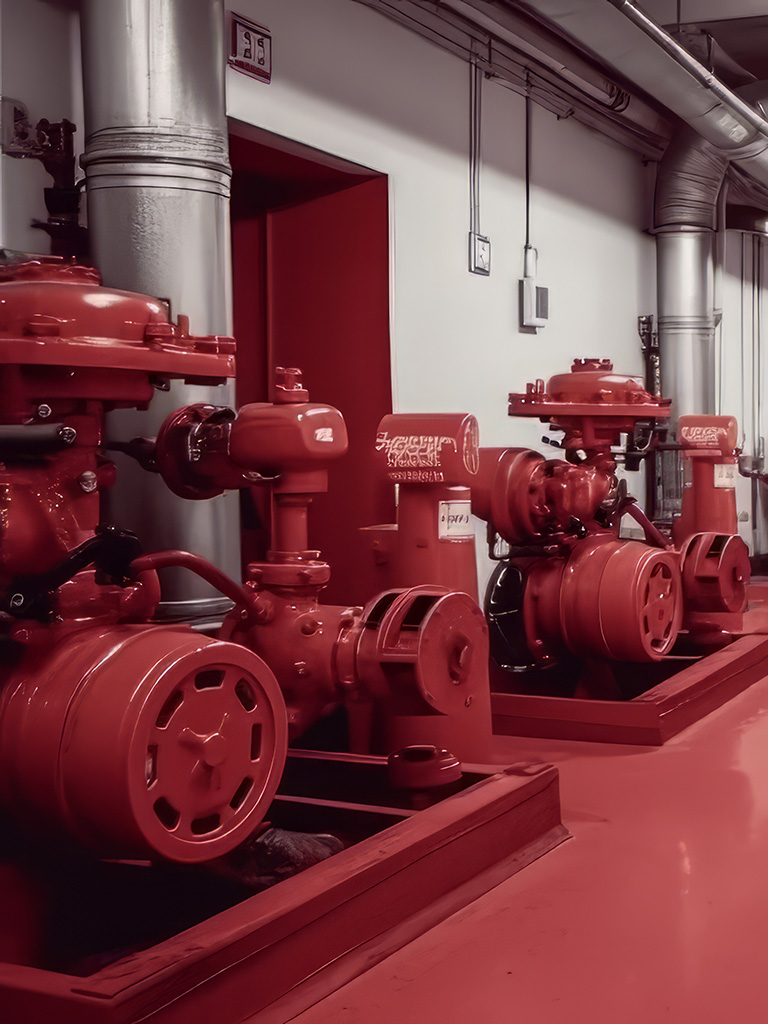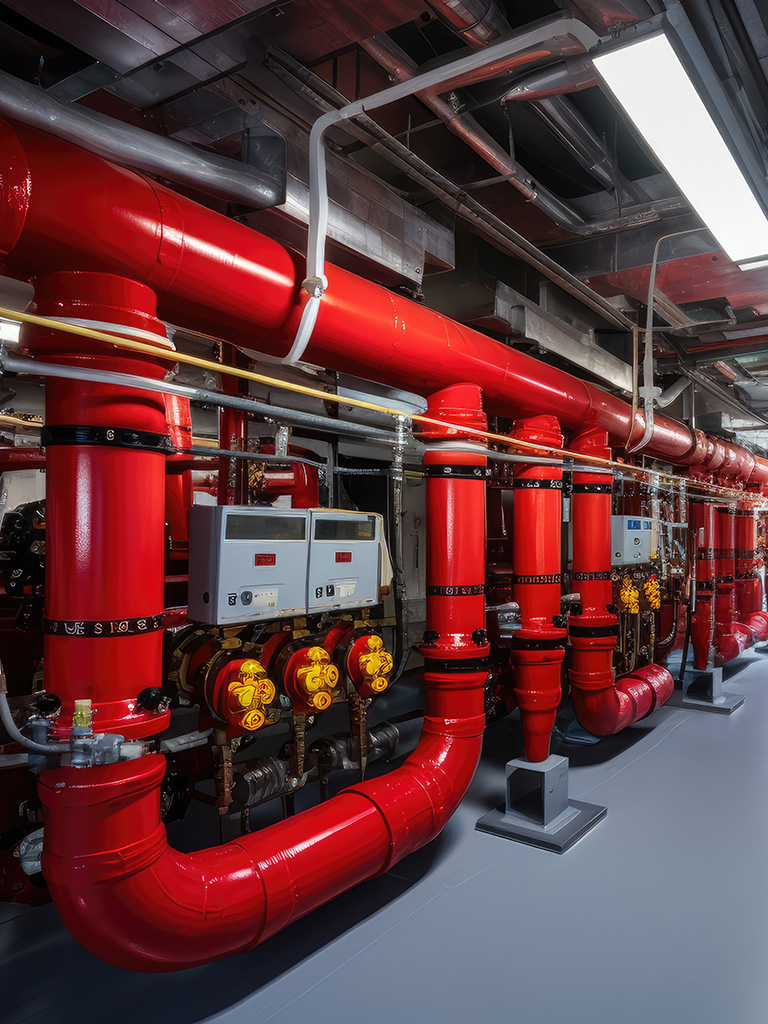Fire automation is an advanced technology system that automatically detects, alarms and responds to fires, minimizing the risk of fire spreading. In modern buildings, fire automation systems are a key element of fire protection, providing early fire detection, effective evacuation and integration with other safety systems. Introduction to fire automation systems covers the main elements such as sensors, fire control panels, alarm systems and extinguishing devices, which work together to provide the highest level of safety.
Fire automation components
Fire automation consists of several key components that work together to detect, alarm and extinguish fires:
- Sensors and detectors:
- Types of sensors: Smoke, heat, gas, flame sensors. Each has a specific application, enabling precise detection of various types of fire hazards.
- Principle of operation: Sensors detect changes in the environment (such as smoke, heat, presence of gases), which leads to activation of the alarm system.
- Fire control panels:
- Functions: Central control units that collect and process signals from sensors, manage alarms and control fire extinguishing systems.
- Meaning: Fire control panels are the brain of the system, coordinating all elements for a quick and efficient response to a fire.
- Alarm Systems:
- Audible and visual signals: Audible (sirens) and visual (strobe) alarms inform people in the building about the threat, allowing for quick evacuation.
- Automatic notifications: Systems can automatically notify fire departments and other emergency services.
- Fire extinguishing equipment:
- Integration with automation system: Sprinklers, sprinklers, gas and foam systems are integrated with the fire control panel, which allows for automatic activation when a fire is detected.

Functions and capabilities of fire automation systems
Fire automation systems offer a range of advanced features that increase safety and minimise the risk of fire:
- Early Fire Detection:
- Operation Principle: Sensors constantly monitor the environment for signs of fire. Early detection allows for a quick response, which is crucial for minimizing damage.
- Benefits: Rapid fire detection reduces the risk of fire spreading and allows for rapid rescue operations.
- Automatic alerting and notification:
- How the systems report a threat: When a fire is detected, the systems automatically activate audible and visual alarms, notify the fire department and other emergency services.
- Notification efficiency: Fast and effective notifications enable immediate response, which is crucial to ensuring the safety of people in the building.
- Fire extinguishing system control:
- Integration with extinguishing systems: Fire automation systems are integrated with various extinguishing systems, such as sprinklers, drenchers, gas and foam systems, which enables automatic activation of extinguishing agents.
- Effectiveness: Automatic activation of fire extinguishing systems minimizes response time, allowing for rapid fire suppression.
- Evacuation and safety management:
- Evacuation assistance systems: Automatic evacuation systems guide people to the nearest emergency exits, ensuring safe and quick exit from the building.
- Security management: Fire automation systems integrate with other building security systems, such as access control and monitoring, to enable comprehensive security management.

Benefits of implementing fire automation systems
Fire automation systems offer numerous benefits that make them an indispensable element of modern buildings:
- Effectiveness in minimizing fire risk: These systems enable rapid detection and extinguishing of fire in its early stages, which significantly reduces the risk of its spread. The automatic response of the system allows for quick control of the situation, limiting potential damage.
- Protection of life and property: Through precise operation, fire automation systems protect both human life and valuable property. Automatic evacuation systems help to safely leave the building, while fire extinguishing systems minimize property damage.
- Compliance with regulations and safety standards: Installing fire automation systems helps you meet applicable regulations and safety standards, which is key to ensuring legal compliance and avoiding penalties. Regular inspections and updates of systems ensure they continue to comply with the latest standards.
- Reduced insurance costs: Having an advanced fire automation system can lead to lower building insurance costs. Insurers often offer discounts for buildings equipped with modern security systems, which contributes to financial savings.
Integration with other systems
Fire automation systems can be integrated with other systems in the building, which allows for comprehensive safety management and increases operational efficiency:
- Integration with building security systems: Fire automation systems can work with monitoring systems, access control and other elements of the security infrastructure. Such integration enables coordinated operation of various systems, which increases the effectiveness of protection.
- Integration with building management systems (BMS): Connecting fire automation systems with BMS allows for central management of all aspects of the building, including heating, ventilation, air conditioning and lighting. Such integration enables the optimization of building management, which translates into greater efficiency and energy savings.
- Compatibility with existing systems: Modern fire automation systems are designed to be easily integrated with existing security systems. This allows older installations to be modernized without having to completely replace the infrastructure, which is more economical and practical.
Why choose our company?
Choosing our company to implement fire automation systems guarantees professionalism, quality and full support at every stage of the project:
- Experience and competence: We have many years of experience in designing and installing advanced fire automation systems. Our team consists of qualified specialists who provide the highest level of services.
- Individual approach to the client: We treat each project individually, adapting solutions to the specific needs of the client. We offer consultations, risk analysis and design of systems that best meet the requirements of a given facility.
- Customer reviews and recommendations: We are proud of the positive reviews and recommendations of our customers. Examples of completed projects and customer satisfaction confirm our effectiveness and reliability.
- Technical support and advice: We provide comprehensive support at every stage of cooperation, from initial analysis and design, through installation and testing, to regular maintenance and service. Our team is always ready to provide professional assistance and advice.
Please contact our team to learn more about our services and the possibilities of implementing fire automation systems in your facilities.
